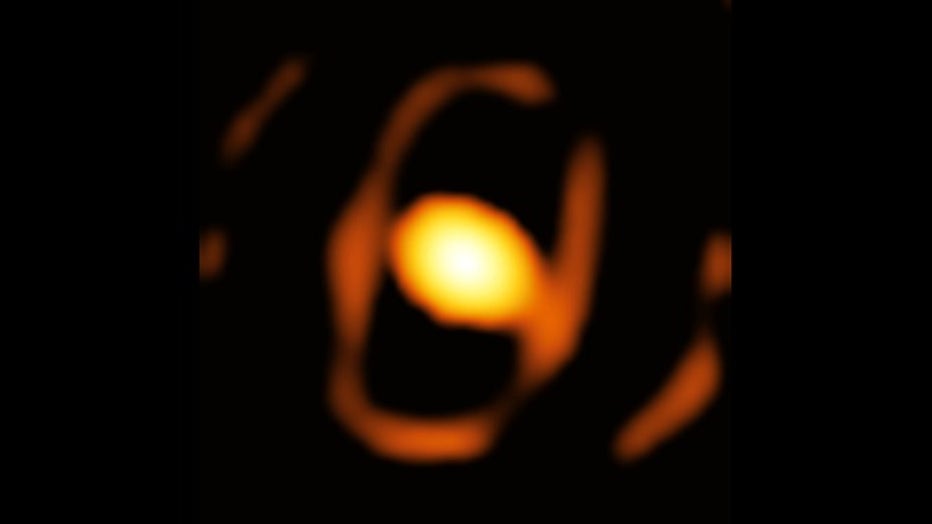Astronomers take the first close-up picture of a dying star outside of Milky Way
Scientists announced Thursday that they had taken the first zoomed-in image of a dying star outside of the Milky Way galaxy.
The star is located 160,000 light-years away in the Large Magellanic Cloud, a small galaxy that orbits the Milky Way.
Known as WOH G64, the star is 2,000 times larger than the Sun and classified as a red supergiant, scientists said.
WOH G64 caught the eye of scientists in 2005 and 2007, when they began using the European Southern Observatory’s Very Large Telescope Interferometer to study the star.
During this time, however, a picture of the star did not yet exist.
According to scientists, about 24 zoomed-in images of stars in the Milky Way have been taken, but images of stars in other galaxies remained a challenge to take.
But by using a newly-developed second-generation instruments of VLTI, astronomers were able to capture an image of WOH G64 – and made some striking observations.
"We discovered an egg-shaped cocoon closely surrounding the star," said Keiichi Ohnaka, astrophysicist and the lead author of a study reporting the observations published today in Astronomy & Astrophysics. "We are excited because this may be related to the drastic ejection of material from the dying star before a supernova explosion."

WOH G64. (ESO / K. Ohnaka et al. / FOX Weather)
Additionally, they found that the star had begun to dim, potentially from the star shedding its outer layers of gas as it dies.
"This star is one of the most extreme of its kind, and any drastic change may bring it closer to an explosive end," noted co-author Jacco van Loon, Keele Observatory Director at Keele University in the United Kingdom. Van Loon has been observing WOH G64 since the 1990s.
Scientists believe this shedding could help explain what they believe is the surprising shape of a dust cocoon around the star, compared to the shape they expected based on past observations and modeling.
Apart from the star’s shedding, the shape of its dust cocoon could indicate that a yet-undiscovered star was nearby.
"We have found that the star has been experiencing a significant change in the last 10 years, providing us with a rare opportunity to witness a star’s life in real time," says Gerd Weigelt, an astronomy professor at the Max Planck Institute for Radio Astronomy in Bonn, Germany and a co-author of the study.
They noted that as the star continues to shed and becomes fainter, taking close-up pictures of the star in the future will become more challenging.
Scientists also noticed an elliptical ring around the dust cocoon, which they surmise is a dusty torus, or ring of cooler dust. However, they said they would need to investigate the feature further to confirm.

